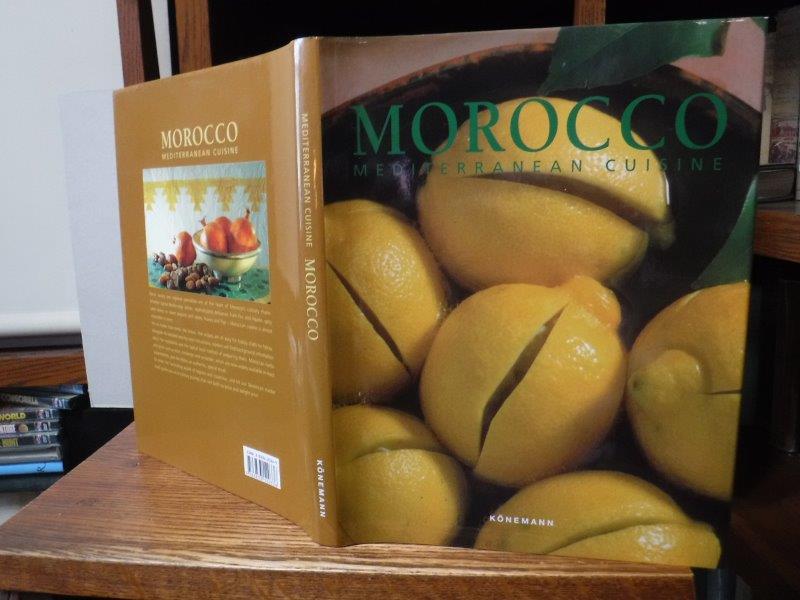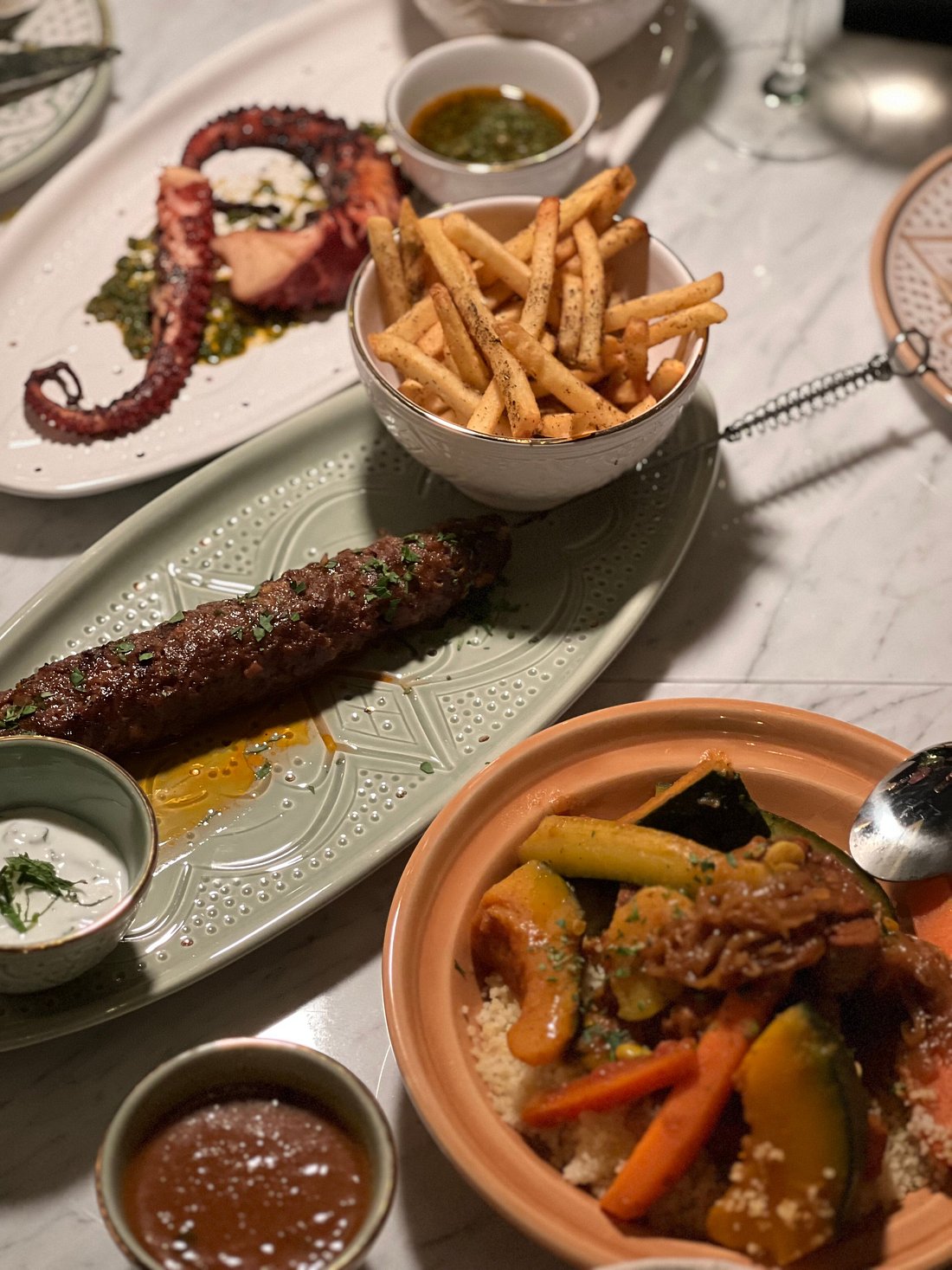Best Mediterranean Restaurant Las Vegas: A Flair of the Mediterranean Is Waiting
Best Mediterranean Restaurant Las Vegas: A Flair of the Mediterranean Is Waiting
Blog Article
Mediterranean Food: A Flavorful Journey With Custom and Preference
Mediterranean cuisine works as a remarkable crossway of tradition and preference, attracting from a diverse range of cultures that cover continents. This culinary heritage not just showcases using fresh, local active ingredients but likewise highlights the relevance of common eating experiences that have been cherished for generations. The profound tastes and health benefits linked with the Mediterranean diet regimen have garnered international affection, yet underneath its surface area exists a complex narrative of historic influences and local specializeds that necessitate further exploration. What distinct aspects add to its long-lasting charm and value in modern cooking practices?
Origins of Mediterranean Food
The origins of Mediterranean food are deeply rooted in an abundant tapestry of background, geography, and social exchange. This cooking practice arises from an area defined by its diverse landscapes, consisting of shorelines, hills, and abundant levels, which have influenced its farming practices and food production. The Mediterranean Container, including countries such as Italy, Greece, Spain, and Turkey, has actually been a crossroads of human beings for centuries, where trade routes promoted the exchange of components, strategies, and culinary viewpoints.
Old cultures, consisting of the Greeks and Romans, substantially shaped Mediterranean foodways, highlighting the importance of fresh, seasonal fruit and vegetables and common dining. The spread of farming, especially the cultivation of grapes, olives, and grains, laid the structure for meals that remain staples today. In addition, the influence of different conquerors and traders, such as the Moors and Ottomans, presented cooking designs and new tastes, even more improving the cuisine.
Today, Mediterranean food is celebrated not just for its taste and diversity but likewise for its focus on healthful consuming, personifying a balanced approach to nourishment that continues to attract international palates. This historic interaction of cultures and ingredients forms the essence of what we currently recognize as Mediterranean food.
Trick Ingredients and Flavors
Mediterranean food is identified by a dynamic variety of key components and flavors that reflect the area's agricultural bounty and cultural heritage. Central to this cooking practice are fresh vegetables, fruits, and herbs, which offer vibrant preferences and necessary nutrients. mediterranean restaurant las vegas. Staples such as tomatoes, eggplants, olives, and bell peppers are frequently featured, showcasing the area's diverse climate and soil
Olive oil, commonly considered the foundation of Mediterranean cooking, imparts richness and deepness to recipes. It is enhanced by a variety of herbs and flavors, consisting of basil, oregano, and garlic, which raise the tastes of meats, seafood, and grains. Grains, especially wheat and rice, work as basic components, with recipes like couscous and pasta being staples throughout the area.
Furthermore, beans such as chickpeas and lentils not only supply healthy protein yet additionally add to the cuisine's heartiness. Collectively, these ingredients create a harmonious equilibrium that defines Mediterranean cuisine.
Regional Variations and Specializeds
Diverse regional variants and specializeds characterize Mediterranean food, showing the distinct social influences, location, and background of each area. In the seaside regions of Italy, for example, seafood preponderates, with recipes like Sicilian caponata showcasing a mix of eggplant, olives, and capers. Meanwhile, Greece is renowned for its use feta cheese, olives, and fresh herbs, obvious in classic prep work such as moussaka and spanakopita.
The Levantine countries, including Lebanon and Syria, stress using grains and seasonings, with specializeds like tabbouleh and kibbeh taking center phase. North Africa, especially Morocco, stands out for its fragrant tagines and couscous, typically enriched with dried fruits and a rich range of seasonings.
In contrast, the Iberian Peninsula highlights using treated meats and bold tastes, with Spanish paella and Portuguese bacalhau exhibiting the area's cooking diversity.
Each Mediterranean area not only celebrates its neighborhood ingredients yet likewise reflects the historical trade paths and cultural exchanges that have formed its food culture, developing a dynamic tapestry of flavors that mesmerizes the taste.
Food Preparation Strategies and Designs
Food preparation techniques and designs in Mediterranean food are as varied as the regions themselves, usually showing regional practices and offered components. The heart of Mediterranean cooking lies in its simplicity, where fresh produce, herbs, and olive oil take spotlight. Methods such as grilling, toasting, and sautéing are commonly employed, permitting the all-natural More about the author flavors of the components to beam.
Grilling, common in seaside areas, infuses fish and shellfish and meats with a great smoky richness, while roasting, particularly in the Center East, enhances the sweetness of root veggies and meats. Sautéing, usually used in Spanish and italian recipes, supplies a quick technique to highlight the richness of garlic and onions, offering as a structure for several sauces.
Stewing is an additional vital method, especially in North African foods, where tagines simmer fragrant spices and tender meats slowly, fusing tastes in time - mediterranean restaurant las vegas. Baking, especially in the context of bread and breads, holds a considerable place in Mediterranean culture, with each area flaunting its own specialties. On the whole, these diverse food preparation approaches not just celebrate the active ingredients yet likewise mirror the deep-rooted culinary heritage of the Mediterranean, making each recipe a testament to its rich background

Wellness Conveniences of Mediterranean Diet Regimen
Frequently identified for its numerous health and wellness advantages, the Mediterranean diet highlights the consumption of whole, minimally refined foods that advertise total well-being. This dietary pattern is abundant in fruits, veggies, entire grains, beans, nuts, and healthy and balanced fats, especially olive oil, while encouraging moderate consumption of fish and fowl and restricting red meat and sugary foods.
Research study constantly links the Mediterranean diet plan to a selection of health advantages. Notably, it has actually been related to a lowered threat of cardiovascular diseases, largely because of its emphasis on heart-healthy fats and antioxidants. The diet regimen is also believed to enhance cognitive function and might lower the threat of neurodegenerative conditions such as Alzheimer's.
In Addition, the Mediterranean diet plan supports weight monitoring via its focus on nutrient-dense foods that promote satiation. The high fiber content from fruits, vegetables, and entire grains aids digestion and aids maintain healthy blood sugar levels.
Along with physical health, the Mediterranean diet regimen cultivates social well-being, as it encourages public meals and shared culinary experiences. Generally, adopting this diet is not only a path to enhanced wellness yet also a celebration of tastes, society, and community.

Conclusion
To conclude, Mediterranean cuisine works as an abundant tapestry of tradition and taste, showcasing diverse local flavors and ingredients. The focus on fresh produce, olive oil, and aromatic herbs not just enhances cooking experiences but also promotes countless health and wellness advantages. By accepting classic food preparation methods and fostering common eating, this culinary heritage remains to motivate and link people across cultures, solidifying its status as a treasured and influential component of global webpage gastronomy.

Cooking methods and styles in Mediterranean food are as varied as the areas themselves, typically mirroring neighborhood practices and available components.In final thought, Mediterranean food offers as a rich tapestry of practice and taste, showcasing diverse regional tastes and ingredients.
Report this page